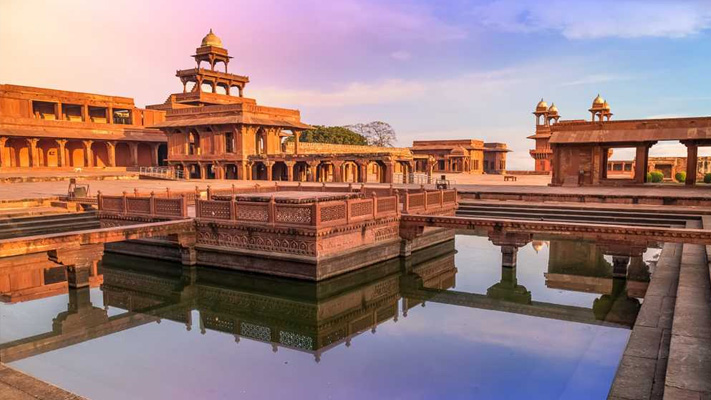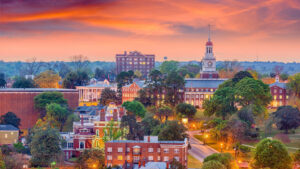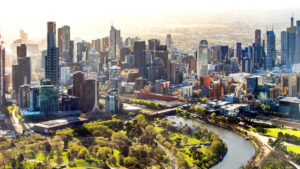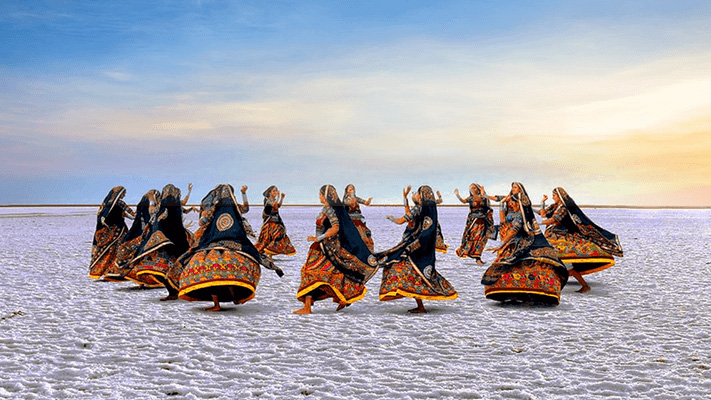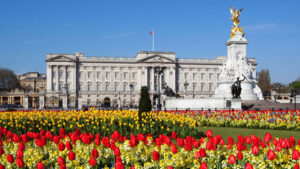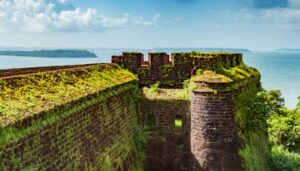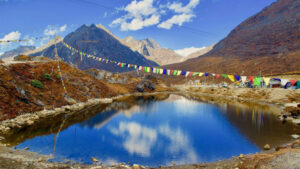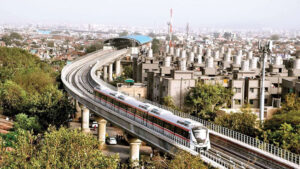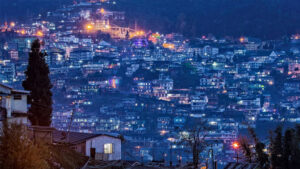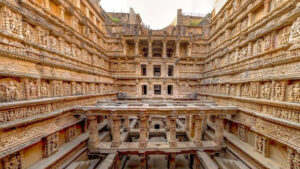FATEHPUR SIKRI, AGRA, UTTAR PRADESH – STEP INTO HISTORY AND DISCOVER THE GRANDEUR

Fatehpur Sikri is a historical city located in the Agra District of Uttar Pradesh, India. It was built during the 16th century by Emperor Akbar, the great Mughal ruler. The city served as the capital of the Mughal Empire from 1571 to 1585 and is now recognized as a UNESCO World Heritage Site. Fatehpur Sikri is known for its magnificent architecture, which combines elements of Persian, Indian, and Islamic styles. The city is home to several notable structures, including palaces, mosques, and public buildings, showcasing the grandeur and opulence of the Mughal era. Despite being abandoned shortly after its completion, Fatehpur Sikri remains a prominent tourist destination, attracting visitors from around the world who come to witness its historical significance and architectural splendor.

Fatehpur Sikri holds a special place in history and stands out for several reasons:
- Architectural Marvel: The city’s architecture is a blend of different styles, including Persian, Indian, and Islamic influences. The intricate carvings, detailed designs, and ornate structures showcase the craftsmanship and artistic brilliance of the Mughal era.
- Buland Darwaza: The Buland Darwaza, meaning “Gate of Magnificence,” is one of the most prominent features of Fatehpur Sikri. This colossal gateway stands at an impressive height of 54 meters and is adorned with intricate artwork. It serves as a symbol of victory and grandeur.
- Religious Harmony: Fatehpur Sikri is home to several religious structures that highlight the Mughal Emperor Akbar’s vision of religious tolerance and harmony. The Jama Masjid, the largest mosque in the complex, coexists with the Christian-influenced Panch Mahal and the Hindu-inspired Diwan-i-Khas.
- Historical Significance: The city was once the capital of the Mughal Empire and served as a political and cultural center. It witnessed the reign of Emperor Akbar and played a crucial role in the empire’s administration, hosting important events and royal gatherings.
- Ghost Town Mystique: Although Fatehpur Sikri was abandoned shortly after its completion, the well-preserved structures and the deserted ambiance give it a unique charm. The aura of a “ghost town” adds to its allure, allowing visitors to imagine and appreciate its historical significance.
- Location: Fatehpur Sikri is situated close to Agra, home to the iconic Taj Mahal. Visitors often combine their visit to the Taj Mahal with a trip to Fatehpur Sikri, as both sites provide a comprehensive experience of Mughal architecture and history.
Visitor Experiences and Activities
Visitors to Fatehpur Sikri can engage in a variety of experiences and activities that offer a deeper understanding of the historical significance and architectural marvels of the site. Here are some of the key experiences enjoyed by tourists:

- Guided Tours: Hiring a knowledgeable guide is highly recommended to explore Fatehpur Sikri. They can provide insights into the history, stories, and architectural details of the complex, making the visit more enriching.
- Explore the Palaces and Structures: Take a stroll through the various palaces, courtyards, and buildings within Fatehpur Sikri. Marvel at the intricate carvings, stunning architecture, and the fusion of different architectural styles.
- Visit the Jama Masjid: Enter the Jama Masjid, one of the largest mosques in India, located within the complex. Explore its expansive courtyard, admire the beautiful marble work, and experience the peaceful atmosphere.
- Pay Homage at the Dargah: Visit the Dargah of Sheikh Salim Chishti within Fatehpur Sikri. Offer prayers, tie threads on the marble screens, and seek blessings from the revered Sufi saint.
- Attend Qawwali Performances: Experience the spiritual ambiance of Fatehpur Sikri by attending Qawwali sessions held at the Dargah. Enjoy soulful Sufi music and witness the devotion of the performers.
- Relax at Anup Talao: Sit by the serene Anup Talao, an ornamental pool within the complex. Reflect on the historical significance of the place and enjoy the peaceful surroundings.
- Explore the Royal Treasury and Other Structures: Discover the Diwan-i-Khas (Hall of Private Audience), Diwan-i-Am (Hall of Public Audience), Panch Mahal, and other fascinating structures that offer insights into the Mughal court and administration.
- Shop for Souvenirs: Browse through the local shops near Fatehpur Sikri to find unique handicrafts, marble artifacts, and other souvenirs as a memento of your visit.
Top Attractions Nearby
While exploring Fatehpur Sikri, visitors can also explore several other popular attractions located nearby. Here are some of the top attractions that you can visit:

- Taj Mahal: Located in Agra, the Taj Mahal is one of the most iconic and breathtaking monuments in the world. It is a UNESCO World Heritage Site and a testament to the eternal love of Emperor Shah Jahan for his wife, Mumtaz Mahal. The Taj Mahal’s stunning white marble architecture and intricate detailing make it a must-visit destination.
- Agra Fort: Situated in close proximity to the Taj Mahal, Agra Fort is another UNESCO World Heritage Site worth exploring. It served as the main residence of the Mughal emperors until the capital was shifted to Delhi. The fort features impressive palaces, gardens, and exquisite architecture.
- Mehtab Bagh: Located on the opposite bank of the Yamuna River from the Taj Mahal, Mehtab Bagh is a beautiful garden complex. It offers stunning views of the Taj Mahal and is an excellent spot for photography and relaxing amidst nature.
- Akbar’s Tomb: Situated in Sikandra, just a short distance from Agra, lies the tomb of Emperor Akbar. The mausoleum is a blend of Islamic, Hindu, and Persian architectural styles and is a significant historical and cultural attraction.
- Bharatpur Bird Sanctuary: Also known as Keoladeo National Park, Bharatpur Bird Sanctuary is a haven for bird enthusiasts. It is home to over 350 species of birds, including migratory birds that visit during the winter months. The sanctuary offers a unique opportunity to witness the beauty of nature and diverse avian species.
Interesting Facts
- Planned City: Fatehpur Sikri was carefully planned and constructed as a fortified city by Emperor Akbar. It was designed to be the capital of the Mughal Empire, complete with palaces, mosques, administrative buildings, and public spaces.
- Abandoned City: Despite being a grand capital, Fatehpur Sikri was abandoned shortly after its completion. The scarcity of water in the region and other logistical issues led to the relocation of the capital back to Agra.
- UNESCO World Heritage Site: Fatehpur Sikri was recognized as a UNESCO World Heritage Site in 1986 due to its cultural and architectural significance. It is considered an exceptional example of Mughal architecture and town planning.
- Buland Darwaza: The Buland Darwaza, the grand entrance gate of Fatehpur Sikri, is the tallest gateway in the world. It stands at a height of 54 meters and is an architectural marvel known for its intricate carvings and imposing structure.
- Panch Mahal: The Panch Mahal, a five-story palace in Fatehpur Sikri, served as a recreational and entertainment space for the royal family. It is an impressive structure with 176 intricately carved columns, each supporting a different level.
- Akbar’s Palace Complex: Within Fatehpur Sikri, there is a vast palace complex that housed the royal quarters, private audience halls, and administrative offices. The buildings within the complex are adorned with exquisite marble work, decorative tiles, and Persian calligraphy.
- Dargah of Salim Chishti: The tomb of Sufi saint Salim Chishti is a revered site within Fatehpur Sikri. It attracts devotees seeking blessings and is believed to have the power to fulfill wishes.
- Red Sandstone Architecture: Most of the structures in Fatehpur Sikri are built using red sandstone, which gives the complex a distinctive and captivating appearance.
- Akbar’s Observatory: Akbar had an observatory constructed within the complex, showcasing his interest in astronomy and scientific pursuits. The observatory features several instruments used for astronomical observations.

Best Time to Visit
The best time to visit Fatehpur Sikri is during the winter season, from October to March. The weather during these months is pleasant and ideal for exploring the historical site. Here’s a breakdown of the seasons:
- Winter (October to March): This is considered the peak tourist season in Fatehpur Sikri. The weather during winter is cool and pleasant, with temperatures ranging from 8°C to 25°C (46°F to 77°F). It is the best time to explore the complex and enjoy outdoor activities without being affected by extreme heat.
- Summer (April to June): Summer in Fatehpur Sikri can be quite hot, with temperatures soaring up to 45°C (113°F) during the peak months of May and June. It is advisable to avoid visiting during this time as the scorching heat can make sightseeing uncomfortable.
- Monsoon (July to September): The monsoon season in Fatehpur Sikri brings moderate to heavy rainfall. The weather is relatively cooler, but the rain can disrupt outdoor activities. However, if you don’t mind occasional showers, the monsoon season offers lush greenery and a quieter atmosphere.


